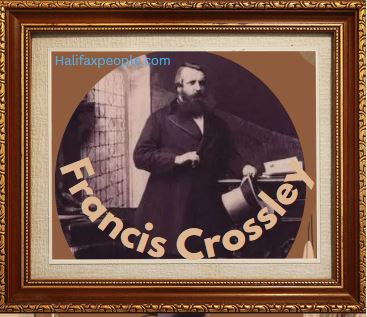
Sir-Francis-Crossley-MP
written by Alan Burnett exclusively for www.Halifaxpeople.com
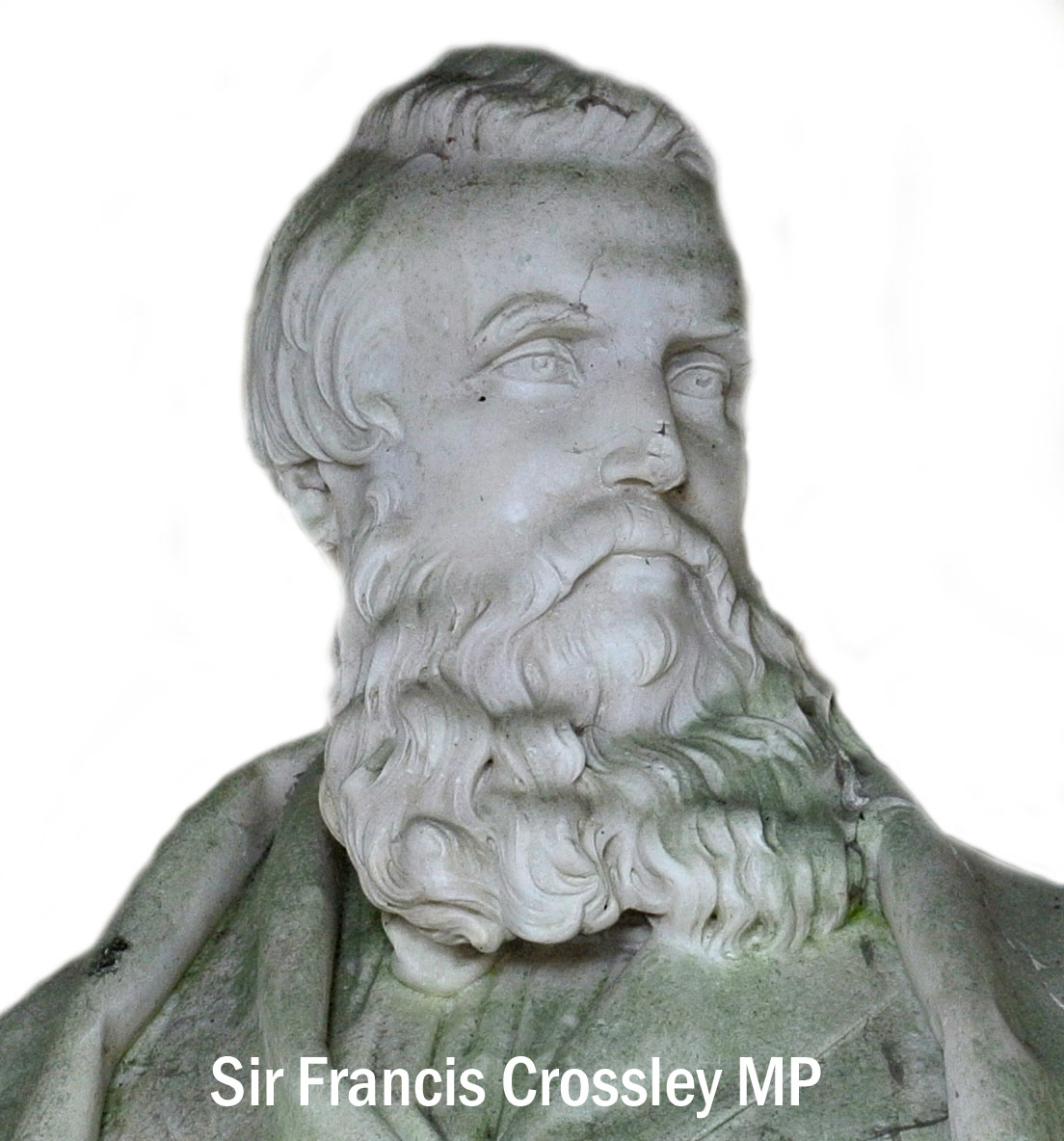
1 : Sir Francis Crossley MP
Most northern industrial towns and cities have the names of their philanthropic benefactors stencilled across their built environment. Streets are named in their honour, and parks, museums, galleries and halls proclaim the generosity of the family name. Bradford had its Lister and its Salt; Huddersfield had its Ramsdens; and Halifax had Ackroyd, Mackintosh and the Crossley family. These Victorian entrepreneurs left a lasting legacy in brick, steel and turf that can still be seen in the valleys of West Yorkshire long after their workshops ceased production and their factories and mills were turned into smart apartments for trans-Pennine commuters. In Halifax, only the Ackroyd family could give the Crossleys a run for their money in terms of corporate generosity, and amongst the various Crossley brothers, it is Francis or Frank Crossley who probably has left the largest architectural footprint on the town itself. It is fitting, therefore, to briefly examine the life and works of Sir Francis Crossley in this first of a short series on “The People of Halifax”.
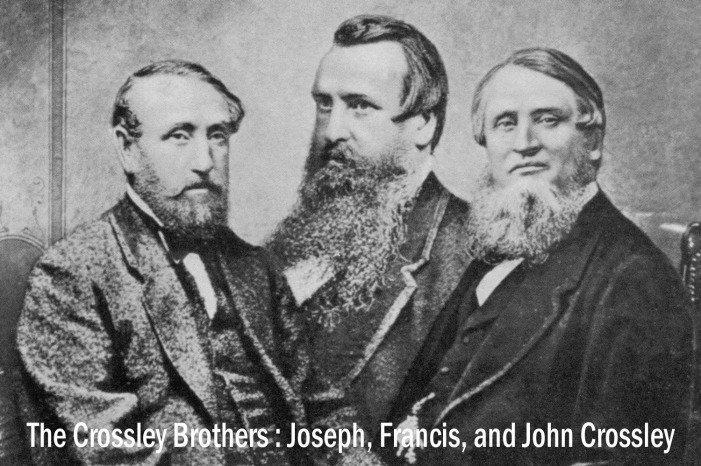
Francis Crossley was born in Halifax in October 1817, the fifth child and the youngest son of John and Martha Crossley. At the time of his marriage to Martha Turner at the very dawn of the nineteenth century, John Crossley was managing a small carpet weaving workshop in the centre of Halifax. Within a few years he had gone into partnership with his brother Thomas and a local man, James Travers, to run a worsted spinning mill at Dean Clough along the banks of the River Hebble. The Crossley family would always maintain that they came from humble origins, which, to a certain extent, was true, but there are degrees of humbleness. The Crossleys were an old and respectable Yorkshire family which had been reduced in circumstances by John Crossley’s grandfather who, we are told, was too fond of hunting and shooting to pay proper attention to his business. Martha Turner came from local farming stock in an age when local farmers would often supplement their income by engaging in small-scale textile manufacture as well. By the time Francis Crossley was born, by a combination of hard work, entrepreneurial drive and good fortune, John Crossley had managed to build his Dean Clough enterprise into a thriving business which was increasingly specialising in the weaving of carpets.
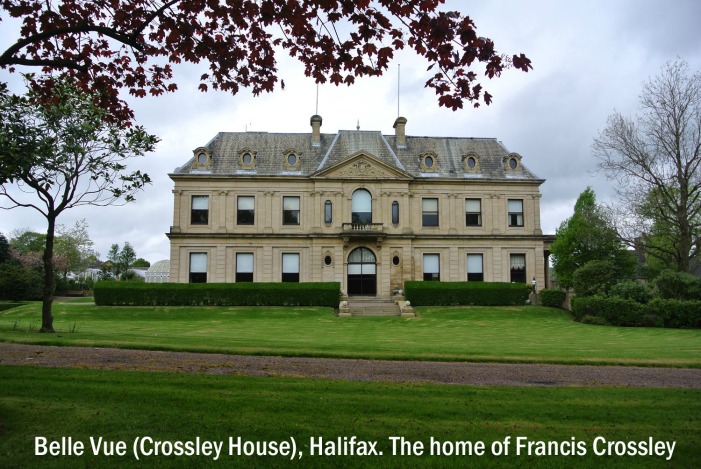
Young Francis Crossley was brought up to appreciate the value of his own good fortune as well as the value of hard work and application. He would tell the story of how his father set up a loom in his Dean Clough Mill at which the young Francis would be expected to work once he had finished his schooling for the day. Once they had left school, John Crossley tried to ensure that his three sons, John, Joseph and Francis, were familiar with all aspects of the business so that eventually they would be capable of not only taking over the running of the firm, but ensuring its future growth. It was in that first half of the nineteenth century that the potential for growth in the particular trade the Crossleys had found themselves was at its greatest. The technological revolution that had seen steam power applied to the spinning and weaving of cotton and wool had already changed the nature of industry throughout the north, leading to the mass production of cheap textile goods which were increasingly supplying a world market as well as an expanding domestic market. It had, however, proved far more challenging to apply steam power and mechanisation to the production of carpets and, at a time when the demand for cheap carpets was constantly growing, their manufacturing still depended on large levels of manual labour.
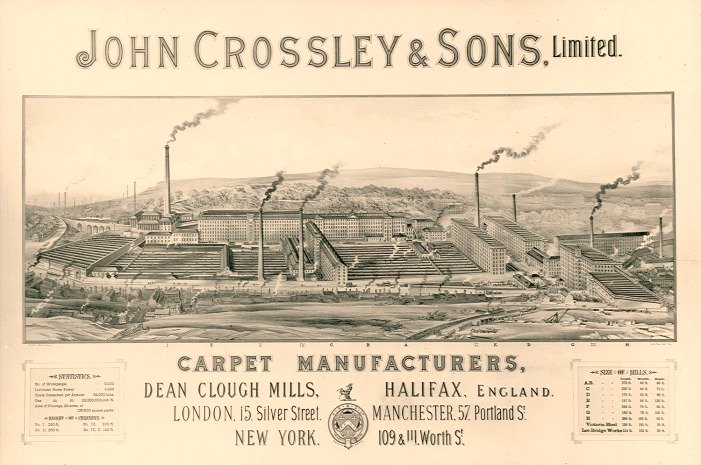
The particular contribution of Francis Crossley to the growth to international dominance of the family firm was to address the challenge of applying mass production techniques to carpet manufacturing. It was not that he was a great inventor, but rather that his talents lay in what today is called entrepreneurship : he spotted a need, he hired the technical expertise, he fine-tuned their inventions, he patented their machine designs – and he made himself and his family a fortune. I suppose if you are looking for a modern equivalent of Francis Crossley, someone who saw opportunities, seized opportunities, vigorously protected his technical developments and then made a fortune by licensing them throughout the world you may finish up by saying that Francis Crossley was the Bill Gates of Halifax.
The connection with modern day millionaires such as Bill Gates is not just on a technical level, because Crossley, and a number of other nineteenth century industrial titans also had a firm belief in the idea of philanthropy. Francis Crossley would tell the story of his mother, on the very day that her husband took a lease on Dean Clough Mills, walking down the mill yard and saying “If the Lord does bless us at this place, the poor shall taste of it”. In the second half of the nineteenth century there was a lot of success to go around. Under the control of the three Crossley brothers – John, Joseph and Francis – the firm expanded at an almost unbelievable rate. Starting with just one mill in Dean Clough, further mills were quickly added until by the end of the century the firm’s buildings covered over twenty acres and employed more than 5,000 workers. Dean Clough under the control of the Crossley Brothers had grown into the largest carpet manufacturing mill in Europe.
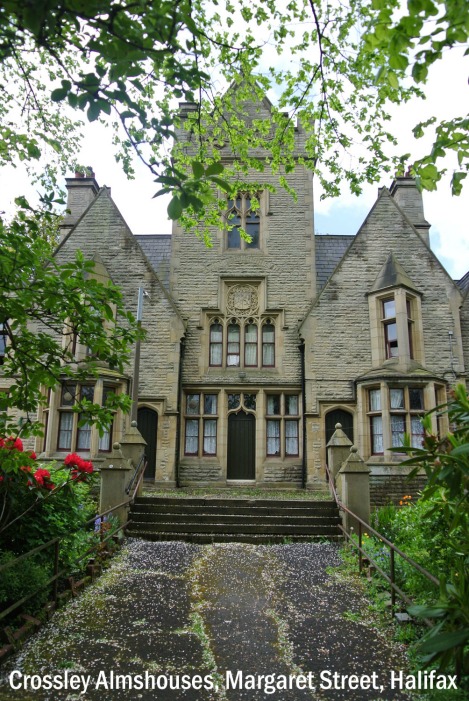
In many ways during that period of rapid growth and development, Francis Crossley became the public face of the firm of John Crossley and Sons. He was a Member of Parliament, he bestowed gifts on his home town, he was devoutly religious; indeed he was the very model of a nineteenth century enlightened capitalist. He didn’t freely give his money away – he didn’t stand at the top of Crossley Street or the end of Francis Street and hand out five pound notes – he directed his charity into schemes he believed in. Equally, in the political arena, he was no socialist; many of his speeches in Parliament complained about the fiscal disadvantages suffered by industrialists such as himself as compared to the traditional landed aristocracy. He believed that the working class would best prosper if the new manufacturing classes he represented would themselves prosper. When in 1864, John Crossley became one of the first of the new generation of public limited liability companies, he made sure that provision was made for employees, particularly managers, to be able to buy shares in the firm. He built 21 almshouses on Margaret Street – probably the most beautiful almshouses in the Halifax area – for retired workers and provided the inhabitants with a pension of six shillings per week. He endowed a £10,000 loan fund for the benefit of deserving tradesmen of the Halifax district. This combination of the practical capitalist and the enlightened philanthropist is perfectly summed up in a speech he gave at a political meeting in Sheffield in 1864 on the subject of the civil War then taking place in America. He recounted the argument he had used a few years earlier when he had visited America and met with slave owners from the South. “I think you go then,” he told them, “altogether upon the wrong track : because look you here, you give £1,200 for a slave. You have to feed and clothe him; and he has no interest in working for you. Now, we in England, have nothing to pay for workmen. They feed and clothe themselves. We give them what they earn, and if they don’t earn it, we don’t pay them”.
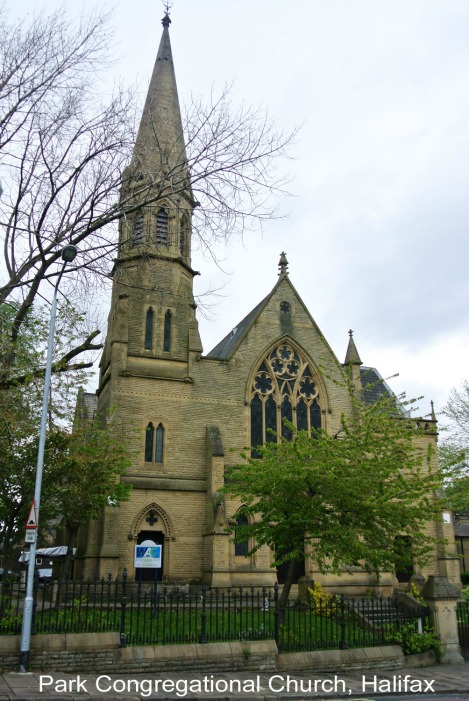
As with so many of his fellow nineteenth century industrialists, Francis Crossley was a deeply religious man and a firm supporter of the nonconformist cause. He erected the still beautiful Park Congregational Church on the corner of – the eponymous – Francis Street. He showered substantial gifts on Bible Societies, Missionary Funds, and Homes for Retired Ministers. And it was as the result of a moment of religious inspiration, that Francis Crossley decided upon his most lasting legacy for the town of Halifax.
In 1855, Francis Crossley embarked on a trip to Canada and the United States, the motive for which was partly commercial and partly in order to experience the beauties and the wonders of the New World. He provides a fascinating description of this visit in a lengthy lecture which was delivered on his return to Halifax at the Odd Fellows’ Hall in January 1856 and which was later published (and can be downloaded free of charge via the splendid Google Books initiative). Later, he recounted at length, a particular episode that occurred when his party visited the White Mountains in the State of Maine.
"I remember that when we arrived at the hotel at White Mountains, the ladies sat down to a cup of tea, but I preferred to take a walk alone. It was a beautiful spot. The sun was just then reclining his head behind Mount Washington, with all that glorious drapery of an American sunset, of which we know nothing in this country. I felt that I should like to be walking with my God on this earth! I said, 'What shall I render to my Lord for all His benefits to me?' I was led further to repeat that question which Paul asked under other circumstances, 'Lord, what wilt Thou have me to do?' The answer came immediately. It was this: 'It is true thou canst not bring the many thousands thou hast left in thy native country to see this beautiful scenery; but thou canst create beautiful scenes for them. It is possible on a suitable spot so to arrange art and nature, that they shall be within the walk of every working man in Halifax; that he shall go and take his stroll there after he has done his hard day's toil, and be able to get home again without being tired.'"
Francis Crossley kept this moment of divine intervention in the forefront of his mind and on his return to Halifax immediately set about realising it. He hired the most famous landscape designer of his day – Sir Joseph Paxton, who, a few years earlier had designed the iconic Crystal Palace – to lay out a park in Halifax and on the 14th August 1857, a day declared a public holiday in Halifax, the People’s Park was opened. As one walks around the Park today, it is interesting to recall that it was an attempt to bring a little bit of American natural beauty to Britain. The design of the park was strongly influenced by Paxton’s work a decade before on Birkenhead Park, which had been the first public park in Britain. In a rather pleasing piece of transatlantic symmetry, it had been Birkenhead Park that had strongly influenced the landscape designer Frederick Law Olmsted, when he designed Central Park in New York just a year after People’s park had been opened.
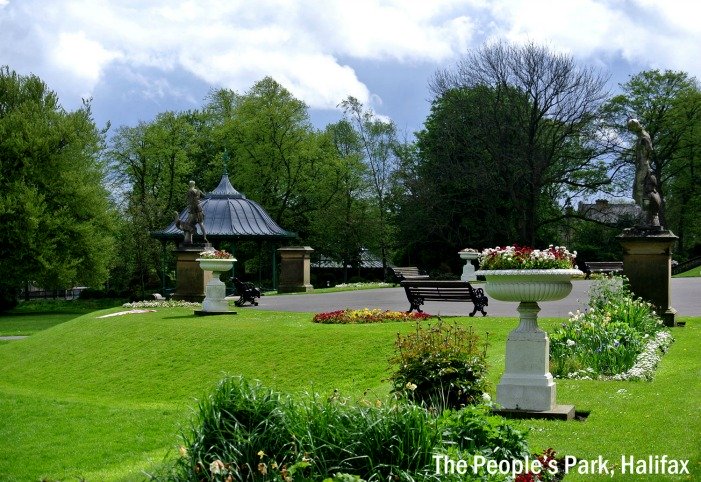
Francis Crossley’s influence on the built environment of Halifax did not end with a famous park, a striking church, and some charming almshouses. He built for himself and his family, Belle Vue (now called Crossley House) adjacent to his park and his almshouses, which must rank as one of the most beautiful buildings in the Halifax district. And along with his two brothers, he built and endowed the magnificent Crossley Orphanage on Saville Park which later became the Crossley and Porter School and Crossley-Heath School. For his political activities on behalf of the Liberal cause and for his philanthropic activities, he was made a baronet in 1862 and he continued to represent Halifax and the West Riding in Parliament until his death in January 1872. In 1862, Francis Crossley had bought Somerleyton Hall in Suffolk as a country retreat and after his death, his wife Martha spent more and more time in Suffolk.
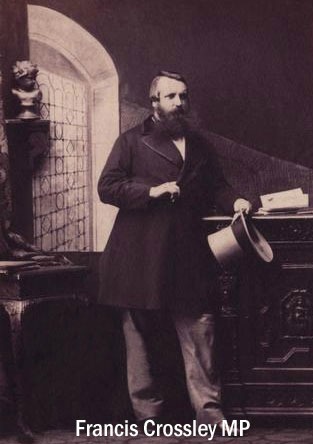
Francis Crossley certainly had a powerful impact on all aspects of life in Halifax. From the viewpoint of the twenty-first century, it is difficult to assess the kind of man he really was. He was certainly “driven”, in both his work, his faith and his love of his native town. Whether he would pass the ultimate test of being someone you would happily go for a couple of pints with at the Old Cock Hotel is unclear : one rather suspects that he would lecture you a little too enthusiastically and, when it was time to order a second pint, would reveal that God had spoken to him and told him to renounce the demon drink.
Sir Francis Crossley (1817–1872), carpet manufacturer and philanthropist
1817 born at Halifax, one of the eight children of John Crossley (c.1772–1837), a carpet manufacturer at the Dean Clough Mills, Halifax, and his wife, Martha Crossley (1775–1854).
On the death of their father, Francis Crossley with his brothers, John (1812–1879) and Joseph, established the firm of J. Crossley and Sons
1845 married Martha Eliza Brinton of Kidderminster.
The firm's rapid growth followed the installation of steam power and machinery. Steam power had already been used extensively in the manufacture of other textile fabrics, and the Crossleys identified its value to their own business. They acquired patents, and then devised and patented improvements which placed them at once far in advance of the whole trade, and gave them the monopoly of a brand of carpet which was subsequently for many years manufactured in greater quantity than any other.
Francis was probably the most enterprising and innovative, taking the initiative in the development of steam-powered tapestry carpet production, but it is hard to distinguish between the roles played by the 3 brothers.
One type of loom, for which they owned the patent, had six times the output of the old hand loom. The possession of this loom and the acquisition of other patents compelled the manufacturers of tapestry and Brussels carpets to abandon their hand looms, and to apply to Crossley for licences to work the firm's patents. Very large sums thus accrued to them from royalties alone.
1852 Francis Crossley was elected as Liberal MP for Halifax; he sat for the borough until 1859, when he became the member for the West Riding of Yorkshire.
1864 the concern was changed into a limited liability company and, with a view to increasing the interest taken by the employees in the working of the business, a portion of the shares in the new company were offered to them on favourable terms, and were widely accepted.
He made many philanthropic gifts to Halifax including almshouses, a municipal park, and an orphanage and school
He was mayor of Halifax in 1849 and 1850, and was created a baronet on 23 January 1863.
1872 Died at home, Belle Vue, Halifax, on 5 January.
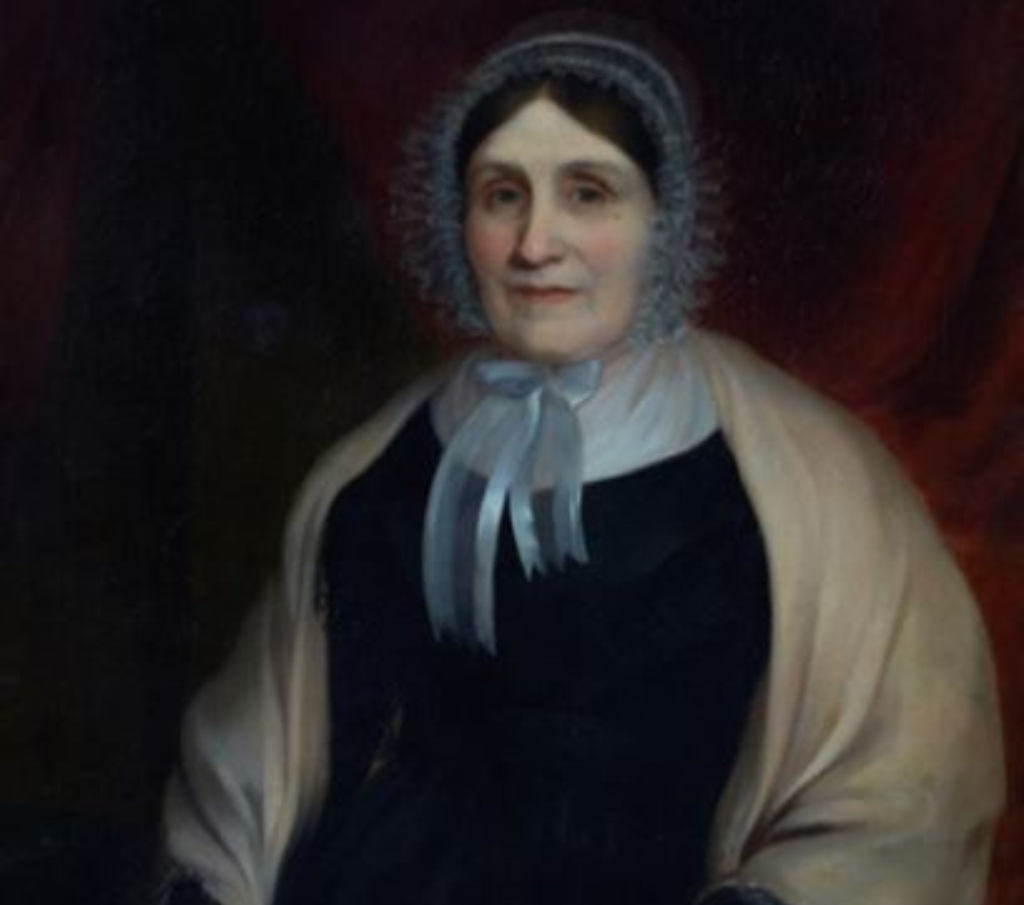
If you have enjoyed your visit to this website, please spread the word by clicking the 'like' and 'share' buttons below. Thank you
